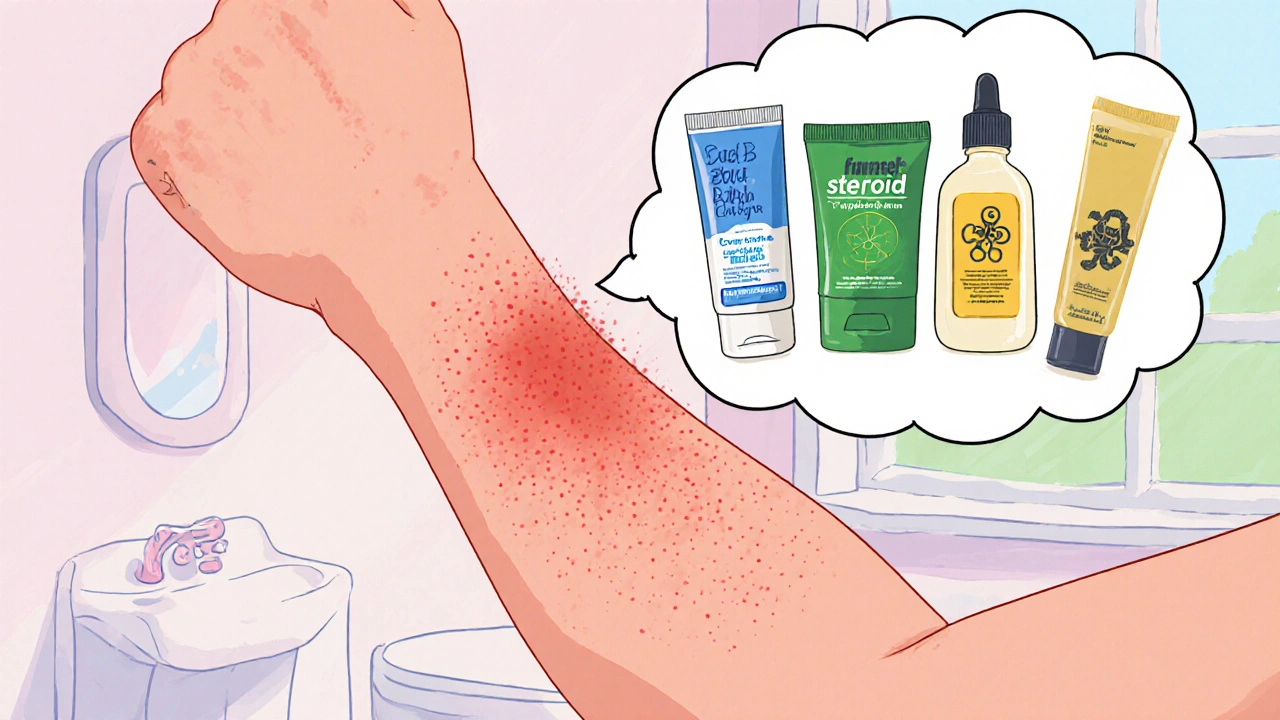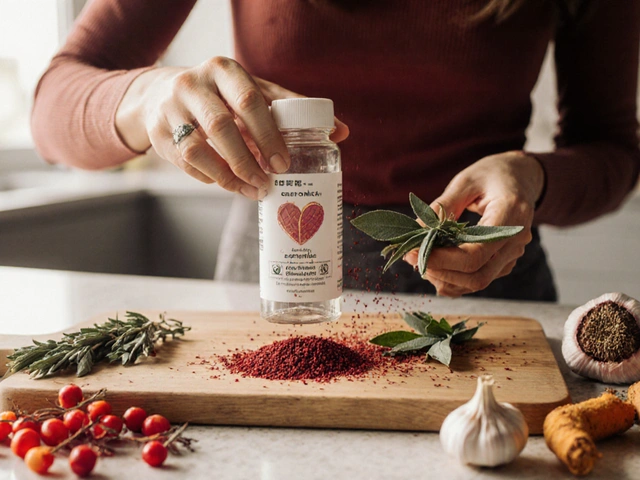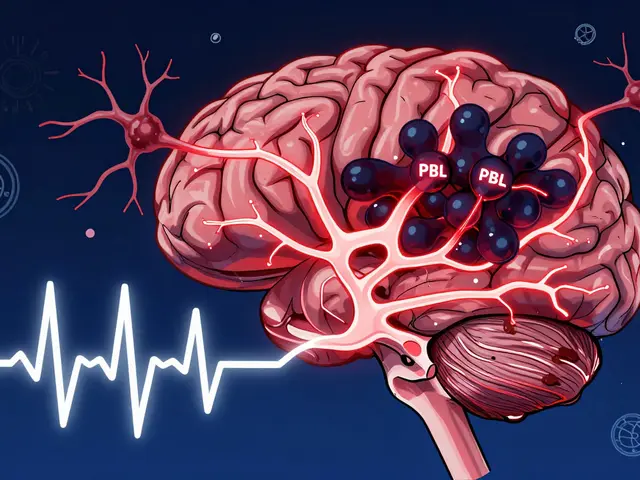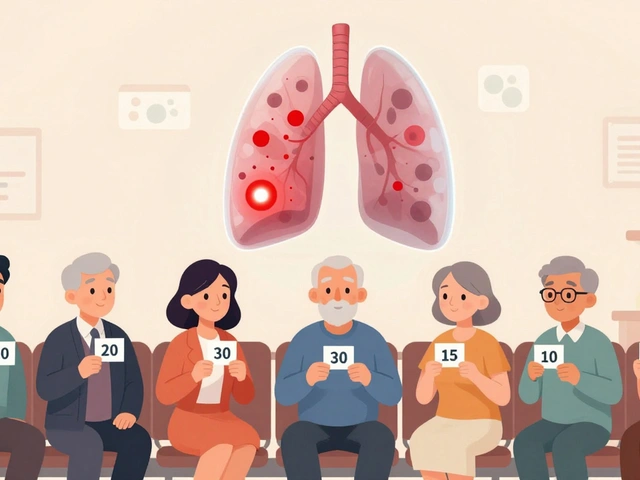When a rash looks both inflamed and fungal, many Australians reach for a combo steroid‑antifungal lotion. Candid B Lotion comparison often lands on the screen because shoppers want to know if it really beats the competition or if there’s a better fit for their skin.
Key Takeaways
- Candid B Lotion pairs a low‑potency corticosteroid (beclometasone) with an antifungal (clotrimazole) for mixed‑type rashes.
- Alternatives fall into three groups: steroid‑antifungal combos, pure antifungals, and pure steroids.
- Choosing the right product hinges on diagnosis (dermatophyte vs Candida), skin thickness, and whether you need prescription strength.
- Most alternatives are OTC in Australia, but some stronger steroids require a doctor’s script.
- Side‑effects are generally mild, but prolonged steroid use can thin skin or cause tachyphylaxis.
What is Candid B Lotion?
Candid B Lotion is a topical emulsion that combines 0.05% beclometasone dipropionate (a corticosteroid) with 1% clotrimazole (an azole antifungal). It’s marketed for seborrheic dermatitis, fungal‑type eczema, and mixed‑infection rashes.
The lotion format spreads easily over curved areas like the scalp, ears, and groin, delivering a thin film that dries without a greasy residue.
How the combination works
Beclometasone is a low‑potency corticosteroid that suppresses inflammation by inhibiting prostaglandin synthesis and immune cell activation.
Clotrimazole belongs to the azole class; it blocks ergosterol synthesis in fungal cell membranes, halting growth of Candida and dermatophytes.
The dual action means you can calm redness while simultaneously eradicating the fungus-a convenient one‑step approach for mixed presentations.
Top alternatives on the market
Below are the most common products Australians consider when Candid B isn’t available, is too pricey, or when a doctor recommends a different strategy.
1. Hydrocortisone + Miconazole cream
Hydrocortisone is a Class I corticosteroid (0.5% strength) offering slightly stronger anti‑inflammatory action than beclometasone and is often paired with Miconazole (1% azole) for broad‑spectrum antifungal coverage. It’s sold under brand names like Daktacort.
Pros: Readily available OTC, good for moderate inflammation. Cons: Slightly higher steroid potency raises risk of skin thinning with long use.
2. Ketoconazole 2% cream
Ketoconazole is a broad‑spectrum azole antifungal especially effective against dermatophytes and Malassezia species. It contains no steroid, making it ideal when inflammation is minimal.
Pros: Strong antifungal action; safe for prolonged use on large areas. Cons: No itch‑relief from anti‑inflammatory component; may require a separate steroid if redness persists.
3. Terbinafine (Lamisil) 1% cream
Terbinafine is an allylamine that inhibits squalene epoxidase, leading to fungal cell death. Marketed as Lamisil, it’s the first‑line therapy for tinea pedis and onychomycosis.
Pros: Fast‑acting, works well on nail infections. Cons: No steroid, so itching may linger; slightly pricier than azole creams.
4. Nystatin suspension
Nystatin is a polyene antifungal that binds ergosterol, creating pores in fungal membranes. It’s chiefly used for Candida‑driven diaper rash and oral thrush.
Pros: Specific for Candida, safe for babies. Cons: Not effective against dermatophytes; not a steroid, so inflammation isn’t addressed.
5. Econazole nitrate 1% cream
Econazole another azole with a broad spectrum covering Candida, dermatophytes, and some molds. It’s available OTC as generic Econorm.
Pros: Covers a wide range of fungi; good for mixed infections. Cons: No anti‑inflammatory component; may need a separate steroid.
Side‑by‑side comparison table
| Product | Active ingredient(s) | Formulation | Primary indication | Typical price (AU$) | OTC status |
|---|---|---|---|---|---|
| Candid B Lotion | 0.05% Beclometasone + 1% Clotrimazole | Lotion (30 ml) | Mixed fungal‑inflammatory rash | 30-38 | Pharmacy‑only (requires pharmacist sign‑off) |
| Hydrocortisone + Miconazole cream | 0.5% Hydrocortisone + 1% Miconazole | Cream (15 ml) | Dermatophyte‑type eczema | 12-18 | OTC |
| Ketoconazole 2% cream | 2% Ketoconazole | Cream (15 ml) | Seborrheic dermatitis, tinea | 15-22 | OTC |
| Terbinafine 1% cream | 1% Terbinafine | Cream (30 ml) | Athlete’s foot, nail fungus | 20-28 | OTC |
| Nystatin suspension | 100,000 IU ml⁻¹ Nystatin | Suspension (100 ml) | Candida diaper rash, oral thrush | 8-12 | OTC |
| Econazole 1% cream | 1% Econazole nitrate | Cream (15 ml) | Mixed fungal infections | 14-20 | OTC |

How to pick the right product for you
Consider these four decision points before you reach for a tube.
- Identify the culprit. If you’ve confirmed Candida (e.g., bright red, moist areas, often in folds), a Candida‑specific antifungal like Nystatin or Clotrimazole is ideal. If a dermatophyte (tinea) is probable, ketoconazole or terbinafine may work faster.
- Assess inflammation. Heavy redness, swelling, or itching suggests you’ll benefit from a steroid component. Low‑potency options (beclometasone, hydrocortisone) are safe for face and skin folds.
- Check treatment length. Steroid‑containing lotions should not exceed 2 weeks without a doctor’s review. Pure antifungals can be used for 4 weeks or longer, especially for nail infections.
- Budget & availability. OTC creams start around AU$10, while pharmacy‑only combos can reach AU$40. Remember insurance rebates may apply for prescription‑only steroids.
Potential side‑effects and safety tips
All topical agents carry some risk.
- Steroid‑related. Prolonged use can cause skin thinning, telangiectasia, or steroid‑induced acne. Rotate sites if you need long‑term therapy.
- Antifungal irritation. Rarely, azoles cause contact dermatitis or a burning sensation. Discontinue if the reaction worsens.
- Systemic absorption. With large‑area use (>10 % BSA) of potent steroids, some systemic cortisol suppression is possible-unlikely with beclometasone but worth noting for pediatrics.
General safety rules:
- Apply a thin layer; more isn’t better.
- Wash hands before and after application.
- Avoid occlusive dressings unless directed by a clinician.
- Seek medical advice if symptoms persist beyond the recommended course.
Frequently Asked Questions
Can I use Candid B Lotion on my face?
Yes, because beclometasone is low‑potency, it’s safe on facial skin for short courses (up to 2 weeks). If you notice thinning or irritation, stop and switch to a steroid‑free antifungal.
Do I need a prescription for Candid B Lotion in Australia?
It’s classified as pharmacy‑only. You can buy it without a doctor’s script, but the pharmacist must sign off after a brief assessment.
What’s the difference between beclometasone and hydrocortisone?
Beclometasone is slightly weaker than hydrocortisone, making it preferable for delicate areas or long‑term use. Hydrocortisone has a bit more anti‑inflammatory punch but raises skin‑thinning risk.
If my rash is only fungal, should I still use a steroid?
Not always. Pure antifungals like ketoconazole or terbinafine treat the infection without adding steroid‑related side‑effects. Add a steroid only if itching or redness is severe.
How long does it take to see improvement?
Most users notice reduced itching within 2-3 days. Visible clearing of the rash can take 7-14 days, depending on the depth of infection and whether a steroid is involved.
Bottom line: Candid B Lotion offers a convenient steroid‑antifungal combo for mixed‑type rashes, but it isn’t the only game‑in‑town. If you can pinpoint the cause of your skin issue, you might save money and reduce steroid exposure by picking a single‑action product that fits your needs.






Brandy Eichberger
21 October, 2025 . 14:21 PM
One cannot help but admire the meticulous breakdown of the Candid B Lotion versus its competitors. The author has clearly invested considerable effort into distinguishing steroid potency and antifungal spectrum. While the comparison table is exhaustive, a few nuances-such as patient age and skin type-could have been foregrounded. Nonetheless, the piece succeeds in demystifying pharmacy‑only status for the lay reader. It strikes a balance between scientific rigour and accessible language, a rarity in consumer health writing. In short, it serves as an elegant reference for anyone navigating mixed‑type rashes.
Rachel Valderrama
25 October, 2025 . 02:21 AM
Wow, another “ultimate guide” that tells you to read the label-who would've thought! If you love wasting money on a lotion that does two things mediocrely, Candid B is your golden ticket. For those who think every rash is a fungal‑inflammatory cocktail, just grab the combo and hope for the best. Of course, the author conveniently forgets that many of us can’t even afford a fancy pharmacy‑only product. But hey, at least you’ll look like a dermatologist’s favorite after two weeks of application. So, saddle up and enjoy the ride!
Chirag Muthoo
28 October, 2025 . 13:21 PM
It is commendable that the article delineates both pharmacologic mechanisms and practical considerations. The emphasis on identifying the etiologic agent prior to therapy aligns with best clinical practice. Moreover, the reminder regarding the two‑week limit for topical steroids is a prudent safety note. Readers will find the structured decision‑making framework particularly useful. Finally, the inclusion of cost ranges aids in shared decision‑making.
Angela Koulouris
1 November, 2025 . 01:21 AM
Great points! I’d add that the lotion’s non‑greasy feel often improves adherence, especially in hard‑to‑reach areas. Colourful metaphors aside, the science still backs the convenience factor.
Harry Bhullar
4 November, 2025 . 13:21 PM
When you’re staring at the Candid B comparison table you quickly realise that “one‑size‑fits‑all” is a marketing myth. The low‑potency beclometasone component is deliberately gentle, which makes it safe for intertriginous zones, but that same gentleness means it won’t out‑muscle a robust hydrocortisone cream if you’ve got severe erythema. On the antifungal side, clotrimazole’s spectrum covers both Candida and many dermatophytes, yet it lacks the fungicidal punch of terbinafine against stubborn tinea pedis or onychomycosis. In practice that translates to a two‑step approach for many patients: start with the combo to calm the itch and clear superficial fungus, then switch to a single‑agent nail‑focused therapy if the infection persists under the nail plate. Cost is another decisive factor; at roughly AU $35 for a 30 ml bottle, Candid B sits squarely in the mid‑range, whereas a generic clotrimazole cream can be snagged for under $10. The pharmacy‑only status also adds a friction point: you need a pharmacist’s sign‑off, which can be a hurdle in rural areas where the nearest shop is hours away. From a safety perspective, the steroid‑related risks-skin thinning, telangiectasia, steroid‑induced acne-are mitigated by the low potency, but you still shouldn’t exceed a two‑week course without clinical review. Pure antifungal options like ketoconazole avoid any steroid side‑effects entirely, but they leave the inflammatory component unchecked, so patients may still experience intolerable itch. Conversely, pure steroids such as hydrocortisone give rapid anti‑inflammatory relief but do nothing to eradicate the fungal load, which can lead to rebound infection once the steroid is stopped. The hybrid nature of Candid B therefore shines primarily in mixed‑type rashes where both inflammation and infection are prominent, for example in seborrheic dermatitis that’s secondarily colonised by Malassezia. If you can confidently identify the aetiology-say, a confirmed Candida intertrigo-you might save yourself a few dollars and a steroid exposure by opting for a monotherapy like nystatin. On the other hand, for a patient with vague erythema and a positive KOH for hyphae, the combo offers a pragmatic “cover‑all” solution that often prevents the need for a follow‑up prescription. Pharmacokinetically, beclometasone has minimal systemic absorption when applied to <10 % BSA, so systemic cortisol suppression is rare; but if you’re treating a large area, a brief adrenal work‑up isn’t a bad idea. In terms of patient adherence, the lotion base spreads easily over curved surfaces and dries without that greasy residue that can discourage consistent use. Bottom line: think of Candid B as a “Swiss‑army‑knife” in your topical formulary-useful when you truly need both weapons, but not the default for every rash.
Dana Yonce
8 November, 2025 . 01:21 AM
Loved the detailed rundown 😊. It really clears up when to pick a combo vs a single‑agent.
Lolita Gaela
11 November, 2025 . 13:21 PM
The pharmacodynamics of beclometasone involve inhibition of phospholipase A2, attenuating the arachidonic cascade, whereas clotrimazole impedes lanosterol 14‑α‑demethylase, curtailing ergosterol synthesis. This duality offers a synergistic attenuation of both inflammatory mediators and fungal cell wall integrity. In pharmacoeconomic terms, the incremental cost–benefit ratio favours the combo for mixed presentations, but monotherapy remains superior for monomicrobial infections. Additionally, the lipophilic nature of the lotion vehicle enhances percutaneous penetration, optimizing bioavailability at the stratum corneum. Clinicians should therefore stratify therapy based on pathogen profile and inflammatory severity.
Giusto Madison
15 November, 2025 . 01:21 AM
Spot on, the mechanistic insight is spot‑on. However, let’s not forget that over‑reliance on “synergy” can mask poor prescribing habits. If a doctor isn’t willing to tailor therapy, the patient ends up with unnecessary steroid exposure. Push for proper diagnostics, not just cocktail prescriptions. The system will thank you.
erica fenty
18 November, 2025 . 13:21 PM
Very thorough-thanks for the breakdown; however, cost remains a barrier; consider generics where possible.
Xavier Lusky
22 November, 2025 . 01:21 AM
They don’t want you to know the real price is hidden in the fine print.
Ashok Kumar
25 November, 2025 . 13:21 PM
Ah, the classic “they’re hiding it” narrative-always a favourite. In reality, the pricing structure is transparent on the pharmacy website; you just need to look. Still, a little mystery keeps the conversation lively.
Jasmina Redzepovic
29 November, 2025 . 01:21 AM
Let’s set the record straight: Aussie pharmacies have the best regulated products, and nothing beats the locally formulated Candid B. Imported alternatives often skimp on quality control, leading to sub‑par efficacy. The government’s pharmacy‑only classification isn’t a hurdle; it’s a safeguard that protects us from unsafe foreign imports. If you’re looking for value, stick with home‑grown brands that meet strict TGA standards. Anything else is just a gimmick marketed to gullible consumers.
Esther Olabisi
2 December, 2025 . 13:21 PM
💡Interesting take! 😂 While I’m all for supporting local, dismissing every foreign product as “gimmick” is a bit extreme. Let’s keep the discussion factual and maybe save some emojis for the end.
Ivan Laney
6 December, 2025 . 01:21 AM
It’s astonishing how quickly the conversation derails when someone dares to question the supremacy of domestic dermatological preparations. First, the regulatory framework in Australia, overseen by the Therapeutic Goods Administration, ensures that every batch of Candid B undergoes rigorous quality assurance, something many overseas manufacturers cannot even claim. Second, the pharmacological profile of beclometasone, being a low‑potency corticosteroid, is deliberately selected to minimise systemic absorption-a nuance lost on those who champion “stronger” steroids without appreciating the risk‑benefit calculus. Third, the economic argument that foreign creams are “cheaper” ignores the hidden costs of potential side‑effects, treatment failures, and additional doctor visits. Fourth, the cultural narrative that we must support home‑grown brands is not merely patriotic; it’s a public‑health strategy to reduce reliance on imported pharmaceuticals that may not meet our specific climate‑related skin challenges. Fifth, let’s not forget that the pharmacy‑only model, far from being a barrier, serves as a checkpoint, ensuring that a qualified pharmacist evaluates the appropriateness of the combo for each individual case. Finally, if you truly care about efficacy, safety, and national pride, you’ll continue to trust the products that have been vetted by our own experts, rather than chasing after every novelty from across the seas.
Kimberly Lloyd
9 December, 2025 . 13:21 PM
The discourse around topical therapeutics mirrors the broader human quest for balance-between aggression and restraint, intervention and natural healing. While national pride can be a unifying force, it must not eclipse the humility required to acknowledge that optimal care sometimes transcends borders. In the end, the skin is a canvas upon which both science and culture leave their marks, inviting us to seek harmony rather than division.